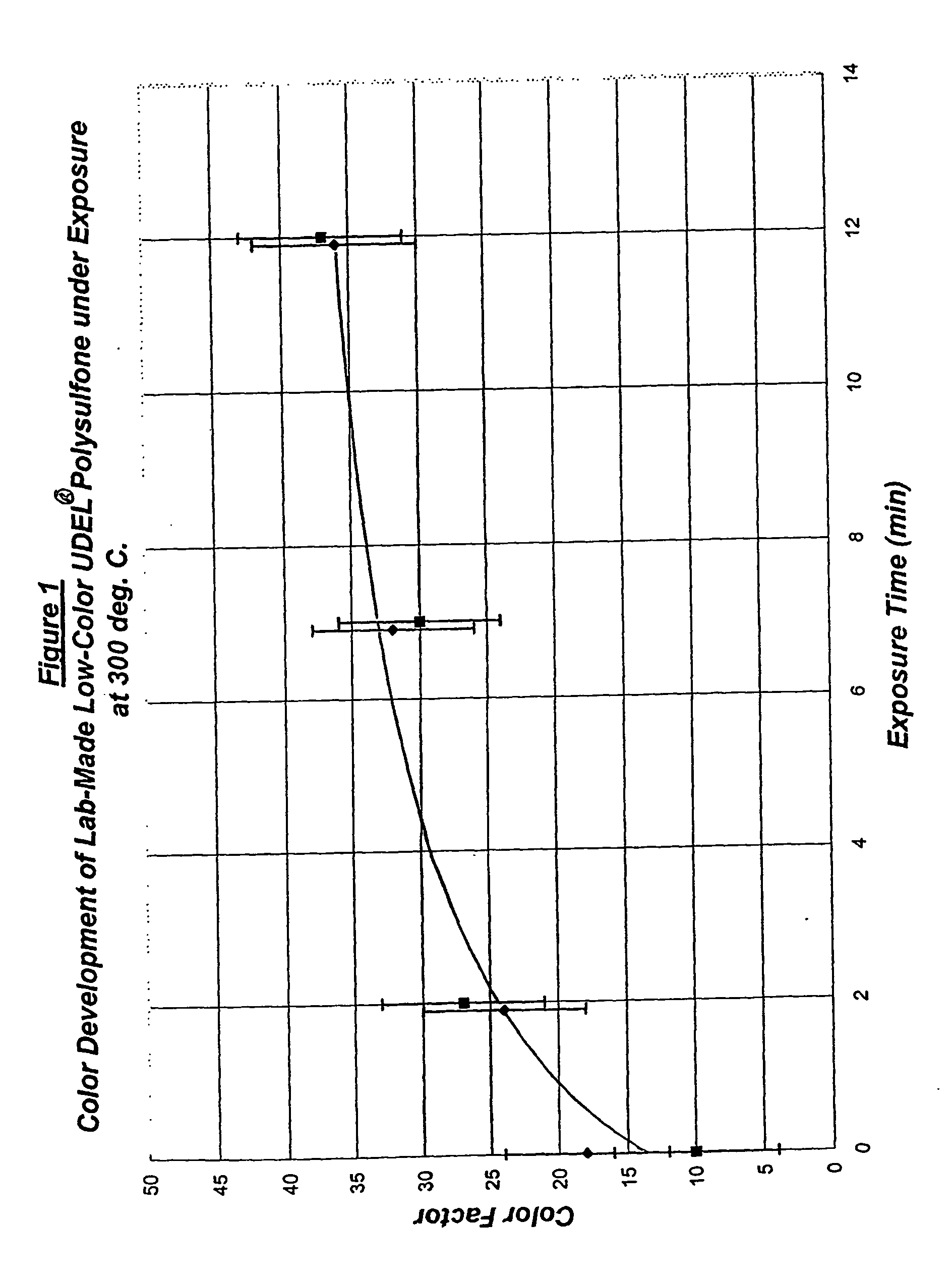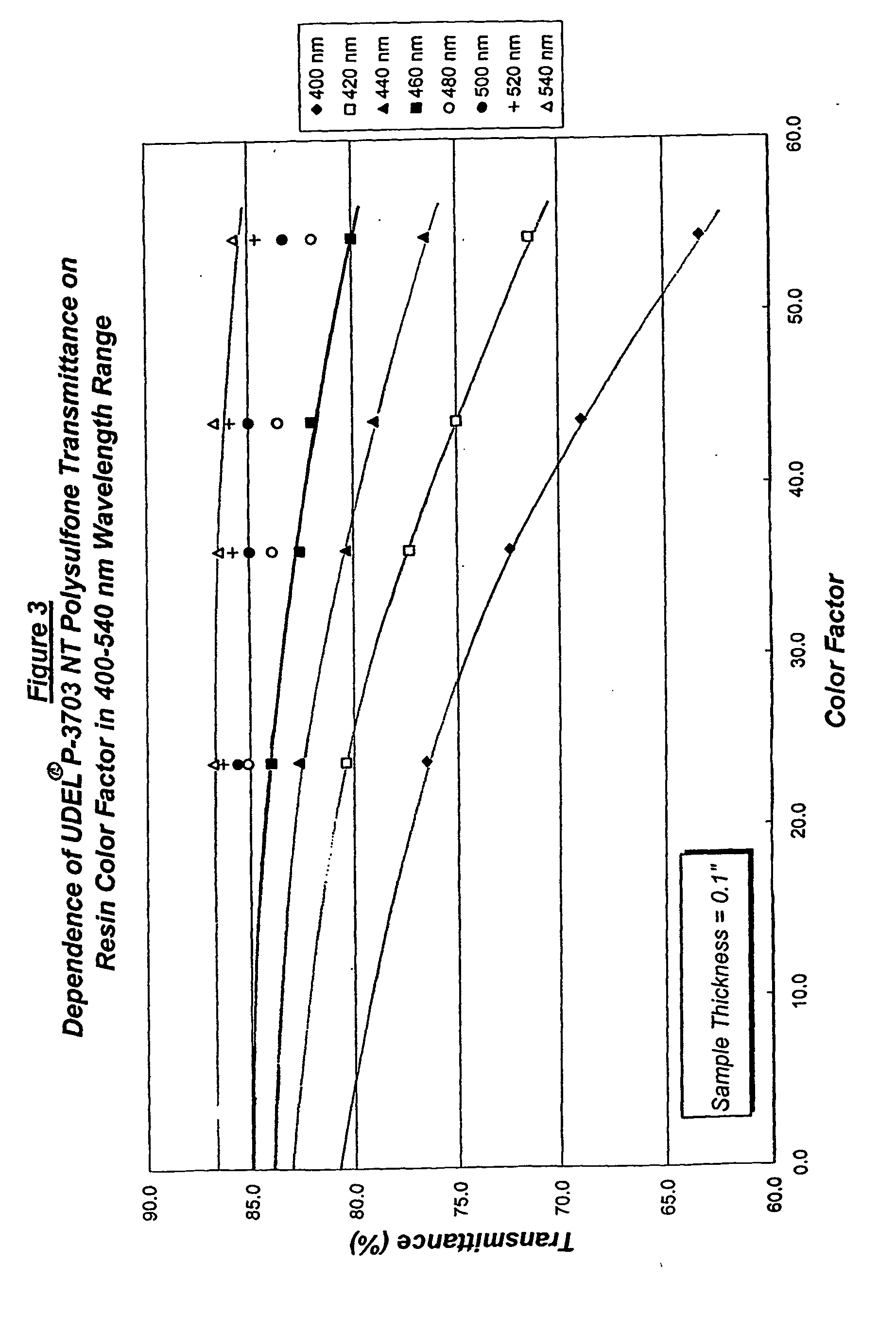Polysulfone compositions exhibiting very low color and high light transmittance properties and articles made therefrom
a polysulfone composition and color technology, applied in the field of polysulfone compositions, can solve the problems of limiting the light transmittance, difficult to maintain the low color factor, and hampered the entry of polysulfone into the ophthalmic lens industry, and achieves good overall aesthetics, low haze, and high transmittance
- Summary
- Abstract
- Description
- Claims
- Application Information
AI Technical Summary
Benefits of technology
Problems solved by technology
Method used
Image
Examples
Embodiment Construction
[0043] The present invention enables the production of molded polysulfone articles with improved light transmittance and reduced yellowing. The present invention provides lightweight, high-light transmittance ophthalmic lenses. The present invention allows the high temperature handling and molding of polysulfone without the attendant decrease in light transmittance and increased yellowing observed in prior art polysulfone compositions. These benefits are provided by a polysulfone composition comprising small amounts of additives selected from organic phosphorous-containing melt stabilizers, optical brighteners, and blue to violet dyes.
[0044] This invention will be described in conjunction with specific examples of polysulfone compositions. However, these are exemplary only, as the claimed invention is not limited to the specific examples described herein.
[0045] This invention relates to bisphenol A polysulfone compositions that are very low in color and yellowness and high in ligh...
PUM
| Property | Measurement | Unit |
|---|---|---|
| luminous light transmittance | aaaaa | aaaaa |
| yellowness index | aaaaa | aaaaa |
| temperature | aaaaa | aaaaa |
Abstract
Description
Claims
Application Information
 Login to View More
Login to View More - R&D
- Intellectual Property
- Life Sciences
- Materials
- Tech Scout
- Unparalleled Data Quality
- Higher Quality Content
- 60% Fewer Hallucinations
Browse by: Latest US Patents, China's latest patents, Technical Efficacy Thesaurus, Application Domain, Technology Topic, Popular Technical Reports.
© 2025 PatSnap. All rights reserved.Legal|Privacy policy|Modern Slavery Act Transparency Statement|Sitemap|About US| Contact US: help@patsnap.com



